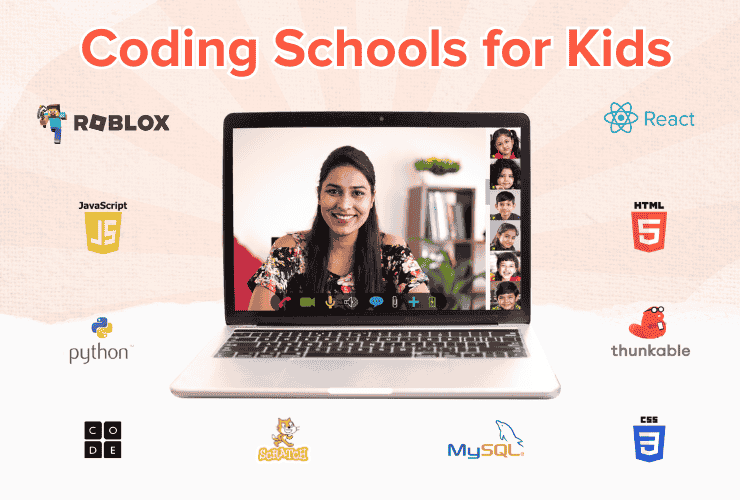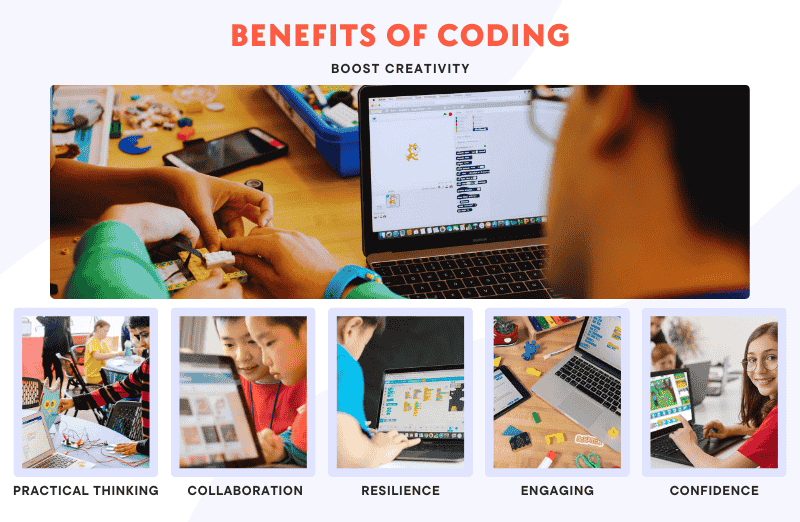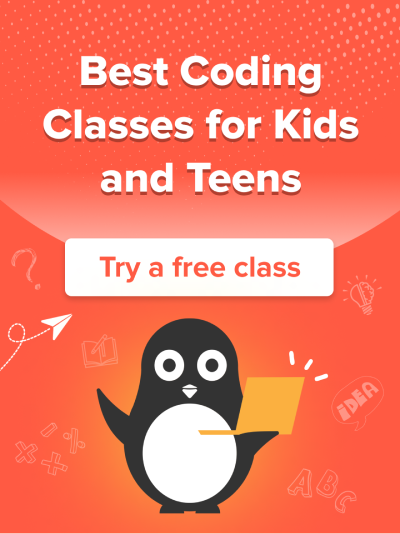Table of Contents
Introduction Top 5 Coding Schools for Kids: Learning Preferences: Finding the Right Fit Choosing the Right Coding Schools for Your Kids and Teens Key Benefits of Enrolling in Coding Schools Comparing Coding Institutes to Self-Learning FAQs: Common Questions About Coding Schools for Kids ConclusionTop 5 Coding Schools for Kids: Boosting Your Child’s Tech Skills
Introduction
As of the end of 2020, 70% of coding jobs are in career fields not directly connected with technology. This means that if your kids learn to code early, they will have a choice of careers in almost every industry imaginable.
So, teaching your kids to code isn’t just about them having tech careers; it’s about opening doors to successful futures in any career they choose. Coding schools for kids in this way do not only aim to produce kids with successful IT toppers, but to nourish and help kids mature into the world of the digital era.
What do your kids want to be when they grow up? Doctor, scientist, astronaut, computer engineer, architect, or an artist? Well, you should know that coding is closely associated with nearly all professions and teaches them how to interact with the technology shaping every corner of our world.

You just need to make sure your kids and teens hop on the coding bandwagon at an early stage. Starting coding young is like learning a second language, it comes more naturally and effectively. Coding boosts problem-solving skills, creativity, and logical thinking and makes your kid better prepared for the tech-driven world.
This is where coding schools for kids come in! They are designed for kids to take all of this potential and put it into fun, hands-on learning environments.
They learn to code through games, projects, and creative challenges, turning screen time into productive time.
As you go on reading, you will learn more about the hype surrounding coding schools and how they are better for your kids than in-person coding institutes.
We’ll also discuss the best online coding schools and answer any questions you might have regarding coding schools.
Top 5 Coding Schools for Kids:
Codingal
Codingal, based out of Dover, DE, is a great online, educational platform tailored to your child’s needs. They have helped over 150,000 students discover their passion for coding, earning an average rating of 4.7 out of 5 on TrustPilot and Google, among the best in the industry.
Codingal is specifically designed for kids and provides a structured, age-appropriate curriculum.
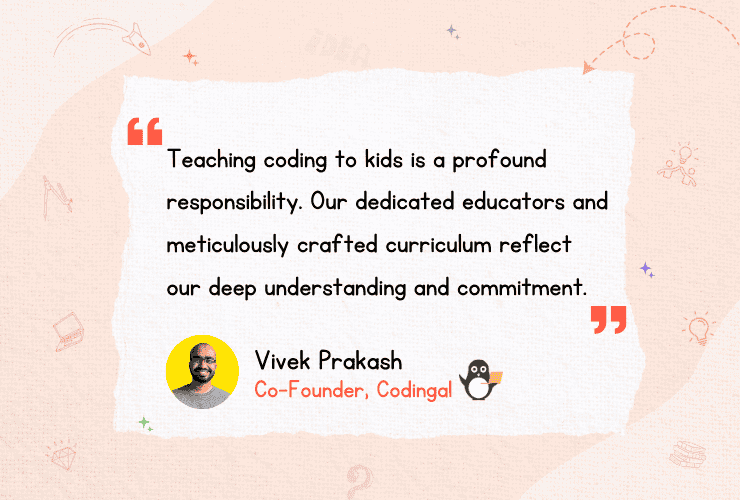
It focuses on building a solid foundation, starting with block-based coding before moving on to languages like Python and HTML.
Why is Codingal so loved amongst parents and kids alike? Well, it’s because of there 300+ expert educators, who are Computer Science graduates and IT industry veterans. They bring real-world experience to their teaching, ensuring that your child receives truly hands-on and exceptional learning.
Codingal also encourages creativity with project-based learning, where kids can develop their own apps, websites, and games. With live, one-on-one classes, personalized attention helps your kids stay engaged and motivated!
So, what are you waiting for? Hop on the best platform for coding for kids.
Tynker
Do your kids like playing games? If yes, then learning through games will also be super fun for them. This is what Tynker, a popular coding platform, has to offer.
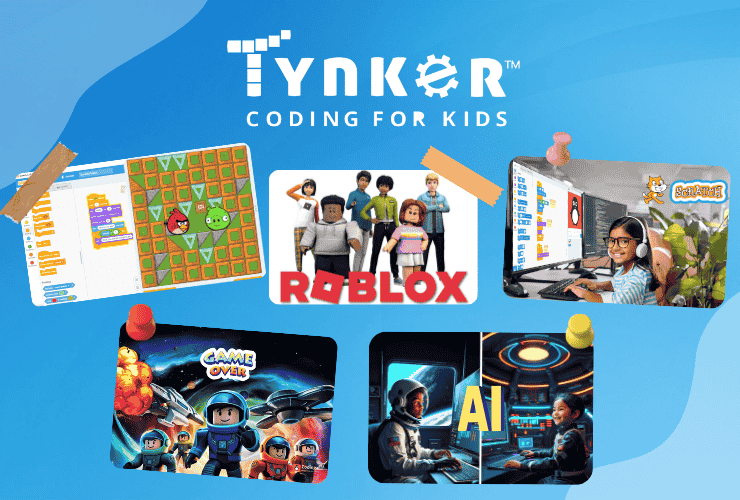
They offer courses for kids of all ages, from young kids to teens, with plenty of interactive content and challenges! Kids begin experimenting with visual blocks, then progress to JavaScript, Swift, and Python.
Tynker will allow your kids to learn at their own pace while exploring everything from web development to robotics!
Coder Kids
Coder Kids is popular for its personal, hands-on approach to teaching coding. They offer classes for grades K through 8th in-person in the Houston, TX area.
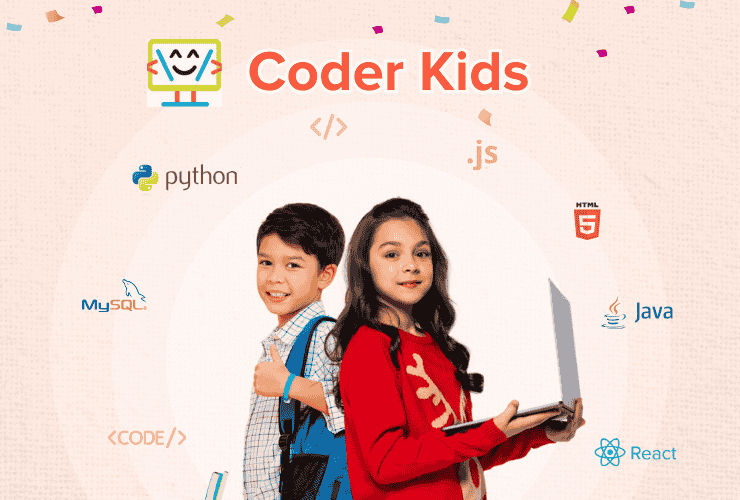
But don’t worry, they also offer online small group classes and 1-1 sessions tailored to each child’s pace. The curriculum is fun and approachable, using games and creative projects to teach coding concepts.
For example, if you have younger kids then they might create a simple animation, while older kids can dive into app development or even work on Python projects!
CodeMonkey
CodeMonkey is an AWARD-WINNING online platform that teaches kids real coding languages like CoffeeScript and Python.
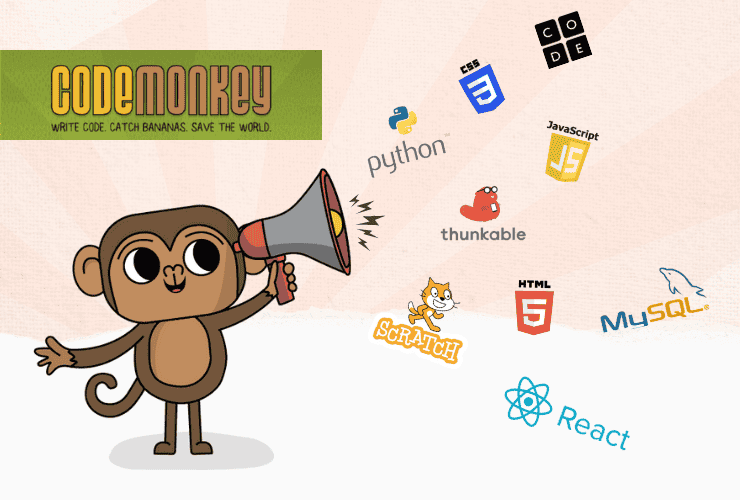
This is very popular amongst kids because they get to play with a monkey and learn how to code at the same time. For example, kids write code to help a monkey collect bananas: a fun way to teach them programming logic and sequencing.
Not only this, but CodeMonkey also aligns with school curriculums, so kids can continue learning coding skills alongside their regular education!
Kodable
Kodable believes that it can “help any kid learn to code” and it is perfect for kids in kindergarten through fifth grade.
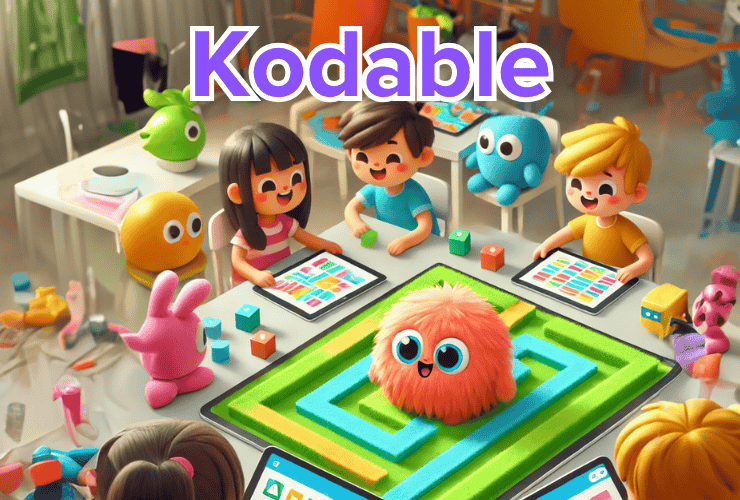
Kodable introduces kids to simple, drag-and-drop coding concepts and gradually introduces more advanced topics like conditionals and loops.
For example, your kids might program a fuzzy character to navigate a maze. This activity is not only a fun way to teach coding but also logical thinking and problem-solving skills.
Parents say that Kodable is a great way to introduce coding to their kids in a beginner-friendly format!
But which coding school is THE ONE for your kids?
Learning Preferences: Finding the Right Fit
As a parent, you must cater to your child’s needs and interests too. Do they like learning through books, games, visual aids, or group settings?
Well, here’s an overview of best coding school based on your child’s learning preferences:
| Learning Preferences | Recommended Platforms | Focus Areas | Example Projects | Best For |
| For Visual Learners | Scratch, CodeMokey, Codingal | Visual Programming, Animations, Game Designs | Design interactive games or animating stories using codeblocks | Kids between 5-10 or teens who are new to coding. |
| For Game Enthusiasts | Tynker, CoderKids, Codingal | Game Developments, Interactive Challenges, Video Games | Creating games using Roblox and Minecraft, or using Scratch programming to build projects. | Kids older than 7 who love gaming and want to make their own games. |
| For Hands-On Learners | Codingal, Techie Camps | Robotics, Coding Exercises and Projects | Programming robots and building animations and stories using their creativity | Kids who love experimenting and building stuff from scratch |
| For STEM-Focused Kids | Codingal, iDTech | AI, Robotics, Data Science, Python | Creating AI models, developing robotics projects, analyzing data | Older kids and teens with a strong interest in STEM fields |
Choosing the Right Coding Schools for Your Kids and Teens
This might be an overwhelming step for most parents, like you. You want to find a coding school that’s engaging and appropriate for your child’s needs and age. You must look for a coding school that provides an experience that’s fun, supportive, and motivating for your kids.
Well, let’s break down what to look for in the perfect coding school for your kids:
Age-Appropriate Curriculum
One of the most important factors in choosing a coding school is ensuring the curriculum fits your child’s age and skill level.
If your kid is younger than 10 years old then the program should be playful and simple, like using visual coding platforms such as Scratch.
But if your kids are older than that, then the school should offer interactive courses on advanced coding concepts and languages like Python or HTML.
For example, a 6-year-old would thrive in a program where they can drag and drop code blocks to animate a character, while a 13-year-old might be ready to build their own website using HTML and CSS.
Experienced Instructors
One book, one pen, one child and one teacher can change the world. So, you should look for a teacher who has the ability to nourish young minds and souls.
Coding can be tricky, so having experienced instructors who know how to explain concepts in a fun and relatable way is what you should look for.
These teachers in the coding school should have a background in both coding and working with kids. For example, your kid has a problem in sequencing a code block and there teacher just corrects the mistakes and move on. In this case, you would want a teacher who will guide your child through the process, helping them understand why something isn’t working and how to fix it.
Great teachers make all the difference.
Interactive and Hands-On Learning
Coding is best learned by doing, not just watching!!! So, the right coding school for your child should emphasize hands-on projects where your kids actively create and experiment.
Whether it’s designing a website, coding a robot, or developing a game, your kids should be able to work independently and kept encouraged throughout.

For example, you should look for a coding school where your kids aren’t just learning through books and tutorials, they built stuff and see the practical results of their coding efforts!
Flexible Learning Formats
Coding schools have children coming from all over the world and have different schedules so, flexibility is key.
Look for a coding school that offers various learning options: after-school programs, weekend workshops, self-paced online courses, or 1-1 Learning sessions. Every child has different learning caliber and needs, you need to find a program that fits around your child’s needs.
For instance, if your kids play a sport and they have practice on the weekends, to they can opt for an online, self-paced course. But if you want to limit your kid’s screen time, then a physical coding school might be ideal so they can learn coding!
Value for Money
If you are investing so much in your kid’s future, it’s your right to get a good value for the price.
Remember to check what’s included in the school’s cost: do they provide personalized feedback, progress tracking, or extra resources like projects or coding challenges?
If it’s a physical coding schools, they do they offer free internet and computers for kids to practice on?
For example, you must be wiling to pay more for a program that offers mentorship or one-on-one support compared to a basic, video-only course.
Key Benefits of Enrolling in Coding Schools
Here are all the reasons why you should enroll your kids in a coding school NOW:
Problem-Solving Abilities
Well, most experts say that coding is essentially problem-solving and that is so true. A simple coding exercise like making a car drive using key controls involves figuring out how to turn the car, slow it down, and avoid obstacles.
So for this simple project, your kid will have to break down the task into smaller steps, think logically, and debug when things don’t go as planned. These skills from coding schools can spill over into other aspects of your kids’ lives, like in schoolwork, helping them solve a math equation step by step and correctly.
Skill Development
In coding schools, your kids don’t just memorize commands or instructions, they develop real skills that can be applied in all kinds of situations.
For example, if your child is learning Scratch then they might create a game where a character jumps over obstacles. While this seems like an easy task, they’re actually building logic and sequencing skills that can be applied to math, science, cooking and so many other daily life challenges.
In the end, it’s all about connecting ideas and making things work step-by-step. Right?
Boosting Creativity
In coding school, if your kid is making a website, then it’s not about blindly following the teacher and following everything they do. It’s also about creativity. Your kid will be free to choose the layout, colors, text, theme and graphics of their website, making their project a unique reflection of their personality.
Hence, coding schools encourage this creativity, showing kids that tech and imagination go hand-in-hand!
Collaboration and Communication Skills
In traditional schools, your kids have teachers, peers and classmates and they interact with them. Similarly, in coding schools, most learning group projects, where kids team up to solve challenges or build something cool.
Working together on a project will teach your kids how to communicate their ideas, listen to others, and collaborate. And you know just how important these skills are in real life.
Just imagine, your kid making a coding game together, deciding on roles, sharing tasks, and figuring out solutions as a team. They will look so grown up and smart to you!
Comparing Coding Institutes to Self-Learning
This is a hot topic amongst concerned parents, who are debating whether they should send their kids to physical coding institutes or enroll in online ones.
On the other hand, there are kids who prefer self-paced learning and they want to experiment and learn on their own.
As a parent, the decision becomes more difficult but we are here to help you out. Let’s weigh all the benefits and drawbacks of online coding schools vs in-person coding institutes and self-learning for kids!
| Aspect | Online Coding Schools | In-Person Coding Schools | Self-Learning |
| Learning Pace | Flexible, self-paced, but with instructor guidance | Fixed schedule, but real-time support and interaction | Completely self-paced, but requires high self-motivation |
| Instructor Support | Live classes with real-time feedback, but virtual | Immediate, in-person feedback, hands-on guidance | No direct support, but forums and online communities are helpful |
| Peer Interaction | Limited to virtual group projects or discussion forums | Direct, face-to-face collaboration and teamwork | None, unless part of an online community |
| Cost | Generally more affordable than in-person schools | Often more expensive due to facilities and hands-on materials | Low to free; costs may include online course fees or resources |
| Practical Exposure | Project-based learning through simulators and platforms | Hands-on activities like robotics, building projects, etc. | Real-world practice can be inconsistent without guidance |
| Flexibility | High flexibility—can attend from anywhere with internet | Less flexible, must attend at specific locations and times | Ultimate flexibility, learning happens anytime, anywhere |
| Accountability | Regular classes and assignments ensure progress | Daily presence and in-person tracking boost accountability | Harder to stay accountable without a set structure |
FAQs: Common Questions About Coding Schools for Kids
And, if you still have some doubts or questions, then we have compiled all the frequently asked questions by parents regarding Coding Schools.
Let’s dive right in!
How much is coding for kids?
The cost of coding lessons for your kids can vary depending on the platform and program. On average, you might pay anywhere from $10 to $150 per class.
Is a coding academy worth it?
Absolutely yes! A coding academy is a great investment for your kids if they have an interest in technology or problem-solving. Experienced instructors and hands-on projects in a coding school teach kids useful life skills like logical thinking and creativity.
How much are coding lessons for kids?
Coding lessons can range from free (via self-learning resources like YouTube and Khan Academy) to around $100-$150 per session for one-on-one lessons. But if you are looking for a subscription-based learning platform then the monthly fee will be around $20-$40.
Is it better to go to a school for coding?
This decision entirely depends on your child’s learning style! As discussed above, you need to weigh the pros and cons of which format of learning is best for your kids.
Is coding a good skill for kids?
Absolutely! Coding teaches kids not just technical skills, but also problem-solving, critical thinking, and creativity.
As we have been discussing throughout this guide, coding skills go hand-in-hand with almost any future career, whether in tech, science, business, or even creative industries like design and entertainment.
What is the difference between coding and programming for kids?
Some people use the words coding and programming interchangeably but they have a slight difference.
Well. coding refers to writing instructions for computers in a language they understand, like Python or Scratch.
On the other hand, programming has a much broader scope, including designing, debugging, and testing these coding instructions.
So, first, your kids will learn coding and then gradually build up to more complex programming concepts.
How do I choose a coding school?
Look for a school that fits your child’s age, interests, and learning style. We have discussed this in detail above.
Which coding institute is best?
There’s no one-size-fits-all answer here. Schools like Codingal, Tynker, and CodeMonkey are highly popular and liked amongst kids and their parents.
What is a good age to start coding?
Children as young as 5 or 6 can start learning basic coding concepts through block-based platforms. And, as they grow up, they can transition to more complex languages like Python or JavaScript, depending on their interest level and exposure.
Conclusion
We hope this guide helped you in choosing the right coding school for your kids and teens and answered all your questions.
Remember that technology continues to shape nearly every industry and coding has become a universal language that opens doors to various career opportunities.
Keep encouraging your child to start coding early, as you’re setting them up for a successful career.
You can use resources like Codingal for live, one-on-one classes and project-based learning for your kids. Codingal is designed to help your child build a strong foundation in coding while keeping them excited and motivated to learn more.
Keep exploring, keep learning, and most importantly, help your kid in their tech-savvy journey! At Codingal, we’re here to support you every step of the way. Happy coding!
